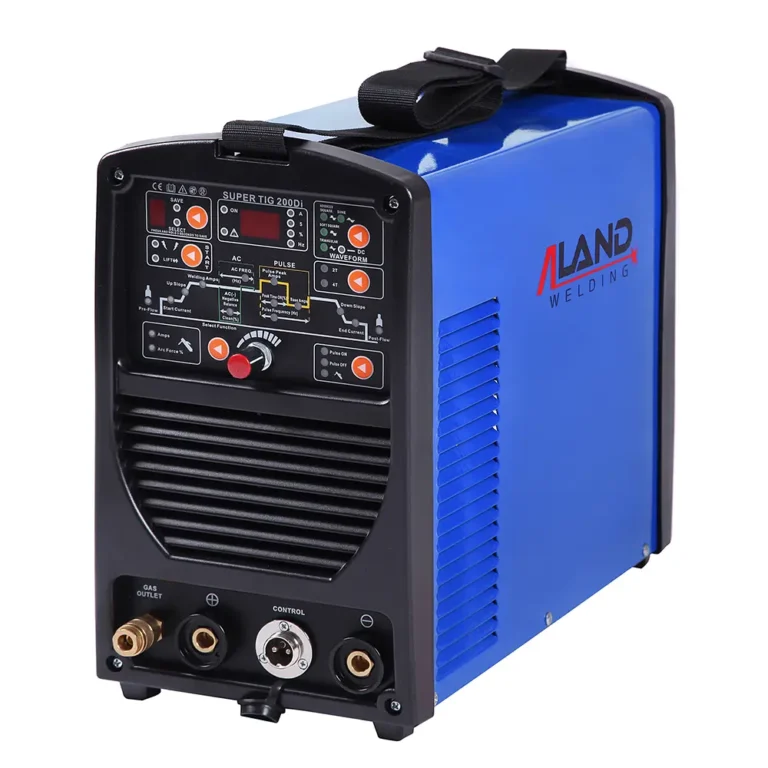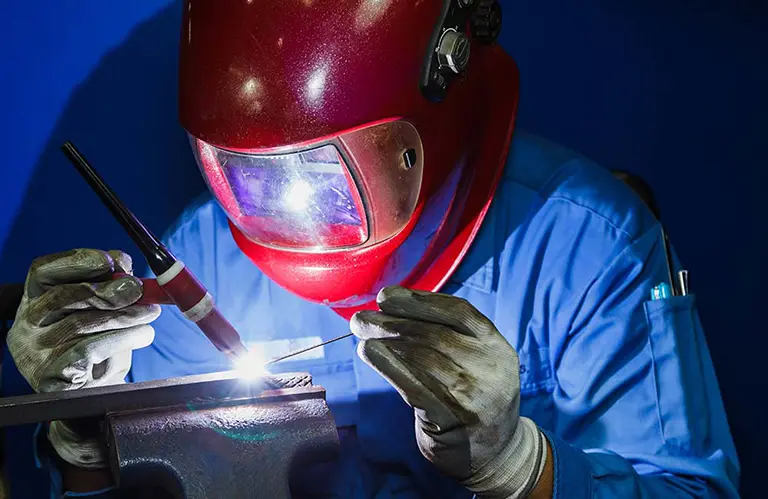mig vs tig welding

ALAND WELDING Let you feel the most sincere welding service
Today, let ALAND welding introduce the differences between TIG Welding and MIG Welding, as well as the respective advantages and disadvantages of MIG vs TIG welding.
1. Introduction of Mig welder vs Tig welder:
Tig welder represents “Tungsten Inert Gas Welding,” which is an arc welding method that does not produce sparks, suitable for welding various metals such as stainless steel, aluminum, and iron. It uses tungsten that does not consume during electrode discharge and inert gases like argon or helium as shielding gases. The arc is generated in the inert gas, melting the base material for welding. Although filler material may be used, the welding area is surrounded by inert gas, ensuring a stable arc with minimal spattering.
Mig welder represents “Metal Inert Gas Welding,” which uses inert gases such as Ar (argon) as the primary shielding gas, including pure Ar or Ar mixed with a small amount of active gases (such as less than 2% O2 or less than 5% CO2) for arc melting welding.
2. Working principles of Mig vs Tig welding:
How to mig weld
The principle of MIG welding is the same as that of general arc welding, except that a small-diameter continuous disc-type bare electrode is used instead of a general flux-coated electrode. The welding part is covered with an inert gas, which is equivalent to the role of the electrode flux, protecting the weld bead from the air. The intrusion of oxygen, nitrogen and water vapor affects the quality of the weld bead.
Inert gases include helium (He), argon (Ar), and other mixed gases like argon-oxygen and argon-carbon dioxide. Due to welding performance and economic reasons, many welding machines now use carbon dioxide gas, known as carbon dioxide semi-automatic arc welding machines, which are suitable for welding low carbon steel used in automobile bodies.
How to tig weld
TIG welding involves inert gas being fed through the welding torch to form shielding around the arc and weld pool. To increase heat input, typically 5% hydrogen is added to argon. However, when welding ferritic stainless steel, hydrogen should not be added to argon. Gas consumption is approximately 3 to 8 liters per minute. During welding, in addition to inert gas blown from the welding torch, it is advisable to blow gas from below the weld joint to protect the backside of the weld.
If necessary, filler wire with the same composition as the base material can be added to the weld pool. For welding ferritic stainless steel, typically 316-type filler is used.


3. Advantages of Mig vs Tig welding:
Mig welder:
(1) Argon effectively isolates the surrounding air, does not dissolve in metal, and does not react with it. The tungsten inert gas arc also automatically removes surface oxide film from the workpiece during welding. Therefore, it can successfully weld easily oxidizable, nitriding, and chemically active metals, stainless steel, and various alloys.
(2) The tungsten electrode arc is stable, even at very low welding currents (<10A), making it particularly suitable for welding thin and ultra-thin materials.
(3) The heat source and filler wire can be controlled separately, making it easy to adjust heat input and suitable for welding in various positions, ideal for achieving single-side welding and double-side forming.
Tig welder:
(1) Low welding cost, only 40-50% of shielded metal arc welding and manual arc welding.
(2) High production efficiency, 1-4 times that of manual arc welding.
(3) Simple operation, visible arc, no limitation on workpiece thickness, suitable for all-position welding, including vertical and overhead welding.
(4) High crack resistance of welds, with low hydrogen and nitrogen content.
(5) Minimal post-weld deformation, with angular distortion of 0.5‰ and flatness distortion of 0.3‰.
(6) Minimal welding spatter, which can be reduced further by using ultra-low carbon alloy wires or flux-cored wires, or by adding Ar to CO2.

In summary:
In terms of applicability, MIG welding is suitable for homogeneous welding, while TIG welding is suitable for autogenous welding. Regarding gas usage, MIG welding uses a final mixture of three gases: nitrogen, oxygen, and helium. TIG welding only uses argon. The MIG welding process is faster than TIG welding. However, compared to other processes, TIG welding has a slower speed. MIG welding is generally performed with DCEP or AC polarity to increase filler metal deposition rates. In contrast, TIG welding is performed with DCEN or AC polarity to increase electrode life.
Articles you may be interested in:
Introduction To Welding Gloves
Difference Between MIG And TIG Welding
A Must-read For Newbies: GTAW Welding
Basic Knowledge Of Welding Procedure Qualification
Pipe Welding Methods—-A Must-read For Newcomers
Main Operating Points Of Ordinary MIG Aluminum Welding
Safety Operating Requirements For Electric Welding Operations

